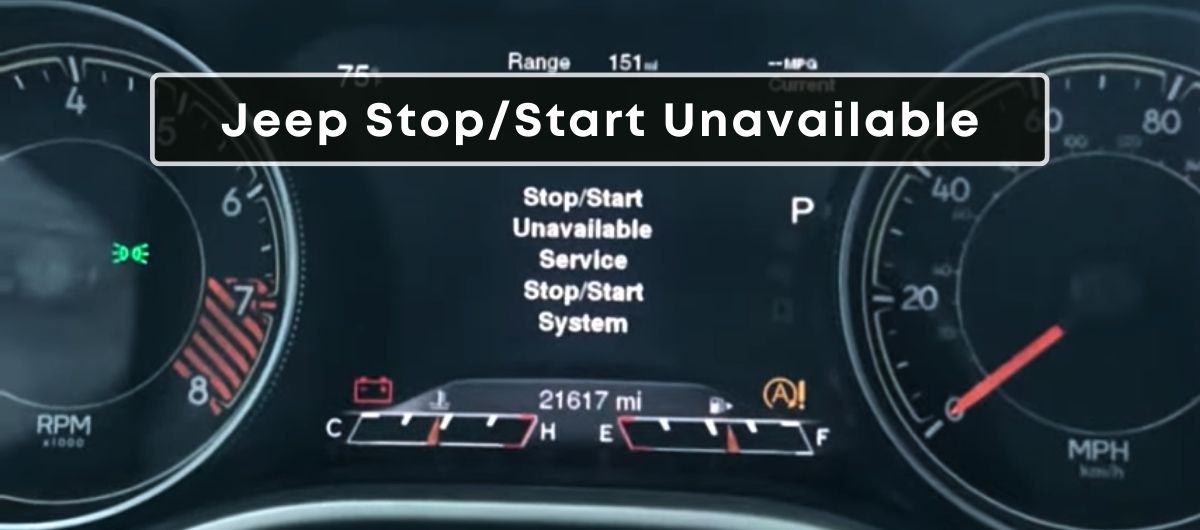Jeep vehicles come with a lot of advanced features to help you in one way or the other.
While most of those features are indeed helpful (such as ABS and traction controls), some are not so, like the auto stop/start system.
Although designed to help Jeep vehicles improve their fuel mileage, many owners have complained about it being finicky and triggering different warning messages, such as the “Stop/Start Unavailable, Service Stop/Start System” for random issues.
So much so that some folks try to disable this feature to turn off those warning messages.
But we’ll not go that far and discuss some practical solutions for this issue instead.
First of all, it’s normal for your Jeep vehicle to show an auto stop/start warning at the start.
Usually, it will be “Auto Stop/Start Not Available, Outside Temperature Too Cold.” Once the engine has been running for some time and is warmed up, this message should turn off automatically.
The only way to reset this light is to fix the underlying malfunctioning component that triggered it. Those components usually include the primary battery, aux battery, alternator, battery sensor, and high amp fuse array.
What is the Jeep Auto Stop/Start System?
The Automatic Stop/Start is an advanced feature found in all of the major Jeep series, such as Cherokee, Grand Cherokee, Compass, and Wrangler.
It’s designed to automatically shut off the engine when the vehicle has stopped and restart it when the driver releases the brake pedal or engages the clutch (in manual transmission vehicles).
This automatic stopping and starting not only results in less fuel consumption but also lowers the amount of emissions released by your vehicle.
That being said, many Jeep owners dislike this feature, mainly because of the number of times it forces the engine to stop and restart – especially in stop-and-go traffic.
I’ve personally experienced this in my friend’s Jeep Compass. This feature makes the engine stop and restart even if the vehicle stops for 2-3 seconds, which can make driving quite annoying.
While there’s an on/off button to turn off this feature, the fact that it’ll automatically turn on the next time you drive makes it even more irritating.
What Does The Jeep Service Stop/Start System Light Mean?
This warning light usually means the stop/start system is not functioning properly. It’s usually accompanied by an icon featuring a capital “A” surrounded by a circular arrow next to an exclamation mark.
Most Jeep owners start checking the door, seat belt, battery temperature, etc., to fix this light.
That’s because their owner manual says that the auto stop/start system will not work if the driver’s seat belt is not buckled, the driver’s door is not closed, the battery temperature is too warm or cold, the HVAC is set to MAX A/C, etc.
What they don’t realize is that the issues that cause the stop/start system not to turn on and the service stop/start system warning light are two different things.
In my experience, this message only appears when there’s an issue with your electrical system.
How to Fix the Service Stop/Start System Warning Light?
1. Test the Primary and AUX Batteries
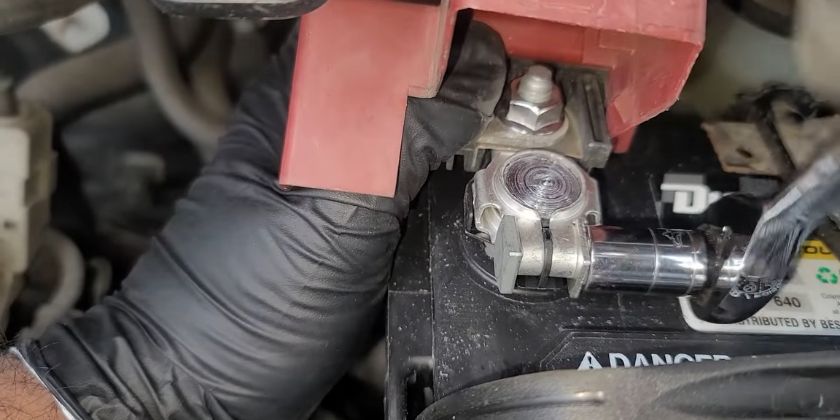
The first thing you should check is the battery voltage.
Many auto stop/start vehicles have a dual-battery setup consisting of a primary battery and an auxiliary battery.
The primary battery works like a normal car battery and powers the starter motor to crank the engine.
On the other hand, the aux battery is designed to handle all of the accessories (radio, interior lights, A/C, etc.) when the engine is shut off by the auto stop/start system.
Despite having a higher capacity, it doesn’t have the cranking amps to power the starter motor.
That’s why, when you press the brake pedal to start the engine again, the main battery steps in and takes back all the load (starter + accessories).
If these batteries have a low voltage, the auto stop/start will not be available as it can turn off the vehicle, and the latter will not start when you crank it next time (due to low voltage).
To test the primary battery voltage, get a digital multimeter and follow these steps:
- Turn the ignition off.
- Set the multimeter to DC Voltage mode.
- Connect its probes to the battery terminals (the red probe to the right terminal and the black probe to the left terminal).
- If the multimeter reads less than 12.4V, the problem is with the battery. It’s at less than 50%, which is why you’re getting the stop/start unavailable message.
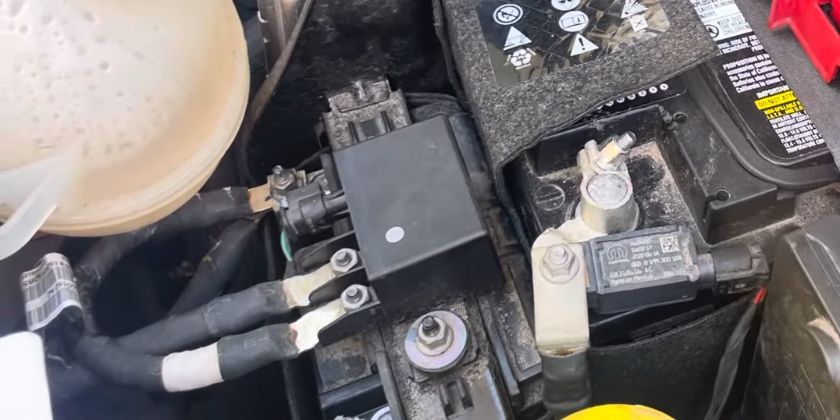
Once you’ve tested with the primary battery, it’s time to do the same with the aux battery.
While the main steps will remain the same, you’ll need to access this battery first. That’s because it’s usually located under the fuse box.
I’ve found a slightly easier method. This video will help you with this.
When testing the voltage, make sure that the jumper cable between the batteries is connected tightly, as a loose/corroded connection can create a voltage drop.
2. Load-Test The Main Battery
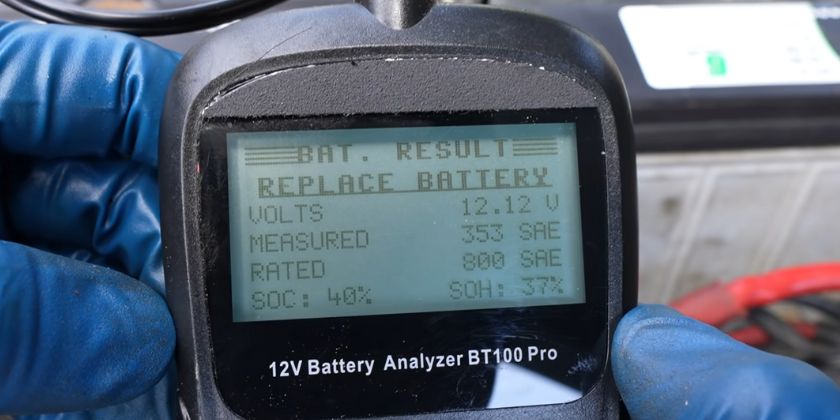
Just because the voltage of your primary battery is good, it doesn’t guarantee that it’ll be able to power the starter motor, as it depends on the Cold Cranking Amps (CCA).
That’s why you need a battery tester to measure the battery’s CCA. If the reading is too low compared to what’s on the specs sheet, the battery is not powerful enough for the starter and should be replaced.
3. Test the Alternator
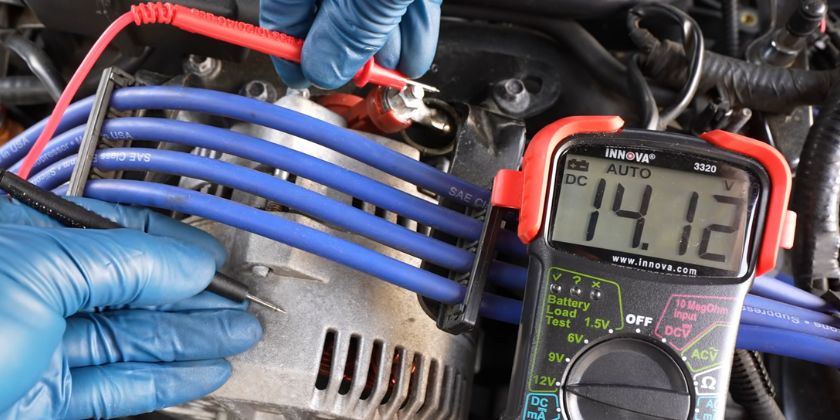
In a dual-battery setup, the alternator recharges both the main and aux batteries.
However, if damaged or aging, it won’t be able to keep up with the load, and one or both of those batteries will get low.
Therefore, if any of your batteries have a low voltage (less than 12.4V), you should test the alternator before replacing those batteries.
Here’s what you need to do:
- Get both batteries charged.
- Set the multimeter to DC Voltage mode at 20V.
- Turn the engine on, but all the accessories (radio, lights, etc.) should remain off.
- Place the multimeter probes on the corresponding terminals on the main battery.
- A healthy alternator will produce a voltage between 13.8 and 14.5 volts. Anything lower than that means the battery is fine, and the problem is with the alternator.
- Turn on some of the accessories to increase the electrical load on the alternator. If the voltage remains above the 13.8V mark, the alternator is working fine. Otherwise, it’s an indication that the alternator cannot maintain charge under load.
- Now, repeat the steps 4-6 for the auxiliary battery.
4. Check The Intelligent Battery Sensor
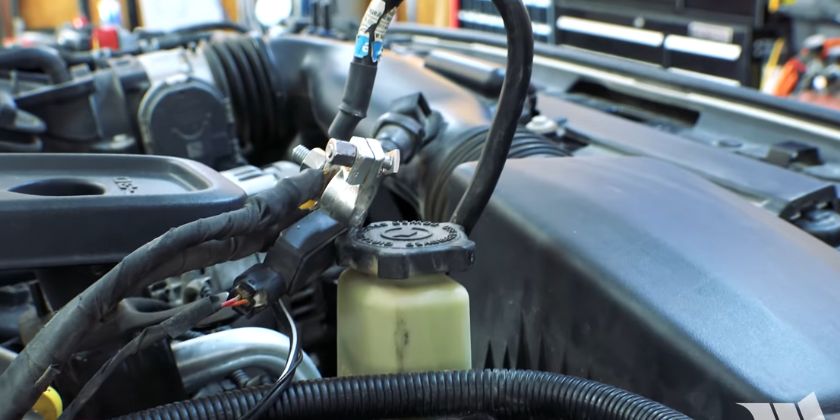
If the batteries and the alternator are working fine, you should check the Intelligent Battery Sensor (IBS).
Featured in many Jeep vehicles, this sensor continuously monitors the battery’s state, including its voltage, current (charging and discharging rates), and temperature.
Based on this information, the ECU optimizes the charging process by adjusting the alternator’s charge rates according to the battery’s condition.
As the stop-start system also relies on this sensor, any malfunction could prevent the system from operating correctly, either by failing to shut off the engine when it should or by not allowing the engine to restart.
Therefore, you need to physically inspect the IBS and make sure it’s not loose or damaged.
5. Replace The High Amp Fuse Array
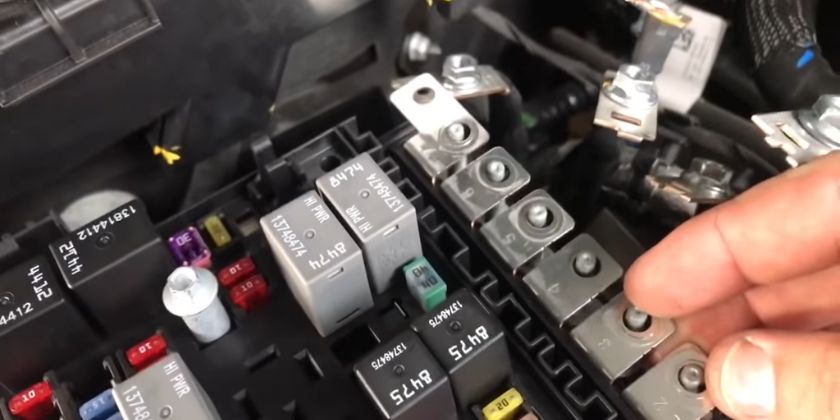
The last area you can check is the high amp fuse array.
Located inside the Power Distribution Centre (PDC), this array is basically a row of fuses dedicated to different systems of your Jeep.
If there’s an electrical overload, some of the fuses inside this row can pop, resulting in the service stop-start system.
While there can be many reasons for electrical overload, the most common one is that you’ve touched the positive and negative terminals of the main battery.
That’s because there’s another cable that runs from the negative terminal of the main battery and the positive terminal of the aux battery.
Therefore, connecting the positive and negative terminals of the main battery without first removing the other cable from the negative terminal can result in a large overload and blowing those fuses.
In short, you need to remove and inspect this array. If any of these fuses show signs of burn, the whole array will need to be replaced.
Frequently Asked Questions
What does an A with a circle around it and an exclamation mark mean on a jeep?
The A with a circle around it and an exclamation on the Jeep’s instrument cluster indicates that the auto stop/start system of that vehicle is not working.
Does auto start-stop drain your battery?
Yes, the auto stop-start puts a lot of extra load on the battery. That’s why many vehicles come with a dedicated auxiliary battery.
Does auto start-stop affect AC?
If the AC compressor in your vehicle is driven by a serpentine belt, it will stop working when the auto start-stop function stops the engine.
Does start-stop save fuel?
Yes, many Jeep owners claim that the start-stop feature has helped them get 1-2 mpg more out of their vehicles.
Is a stop-start battery the same as a normal battery?
No, a stop-start battery is a battery specially designed to handle frequent engine stops/starts. It can also withstand repeated draining and recharging cycles without any significant degradation in performance or lifespan.
How to Disable The Start-Stop System in Jeep Compass?
There are various ways to turn off the auto stop-start system in Jeep vehicles.
Around the climate controls, there’s usually an “auto off” button between the tractional control and BACK buttons. Press this button once to turn off the stop-start feature.
The main problem with this method is that it resets every time you turn off the vehicle.
This means that when you start the vehicle again the next morning, auto stop-start will be automatically turned on, and you’ll have to turn it off again.
Another thing you can try is disengaging the hood ajar switch. It’ll permanently disable the stop-start system but might get some fault codes.
The last method is disconnecting the aux battery terminal. It works fine, as when the aux battery doesn’t work (due to a disconnected terminal), the stop-start system doesn’t function.
However, the main downside is that you’ll get the Stop/Start Unavailable, Service Stop/Start System warning message.
In short, all of these methods have pros and cons. You decide which one is better suited for you.

